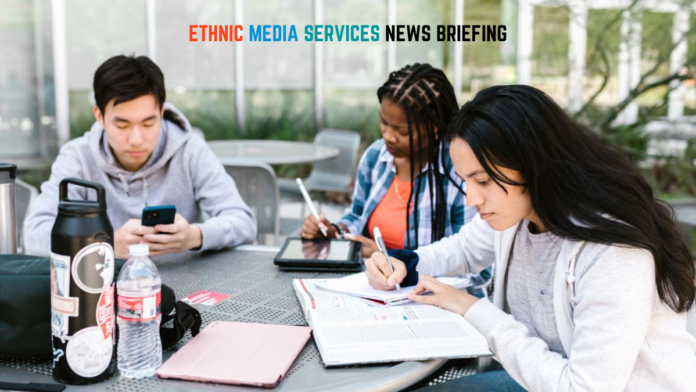Vidya Sethuraman
India Post News Service
Ethnic Media Services and California Black Media, in partnership with the California Student Aid Commission (CSAC), presented a statewide ethnic media briefing to highlight the critical September 3 deadline for California Community College students to apply for financial aid through the FAFSA or California Dream Act Application (CADAA). California Community Colleges serve over 1.9 million students, making it the largest system of higher education in the nation. More than 70% of these students come from diverse ethnic backgrounds, with 48% identifying as Hispanic. Additionally, many students are from economically disadvantaged backgrounds, with 65% classified as Perkins Economically Disadvantaged. Despite the availability of financial aid through the California Dream Act, the number of undocumented students applying for these aid programs remains low. This briefing aims to provide clear information and guidance to these students, helping to ensure that they are informed and supported in the application process. It is crucial to reach out to all eligible students, including undocumented students, to ensure they have the financial resources needed to continue their education.
Dr. Daisy Gonzales, Executive Director, California Student Aid Commission said

that California community colleges serve more than 1.9 million students, making it the largest higher education system in the United States, of which more than 70% are from minority backgrounds and 48% are Hispanic. In addition, many students come from families with financial difficulties, and about 65% of students with financial difficulties can receive financial aid through the California Dream Act.
Gonzales said that she relied on various federal and California financial aids to successfully complete her studies, from community college to the University of California, Santa Barbara. After completing her master’s and doctoral studies, her life changed. She said that the federal government and California have many programs to help disadvantaged students, but the key is to apply and take action. She particularly emphasized that the deadline for emergency financial aid applications for community college students in the 2024/2025 fiscal year is September and March. From immigrants and low-income families, 54% of applicants may be eligible, including tuition, books, and transportation.
Ivan Hernandez, President, Student Senate for California Community College said that he came to the United States from Mexico with his parents when he was a child. Due to financial difficulties at home, he received financial assistance to complete higher education. Hernandez said that the application process is not complicated, and it takes about two hours to fill out the application materials. He emphasized that financial subsidies do not check the immigration status of applicants, and the identities of all applicants will be kept confidential. Hernandez concluded that there are four situations that hinder applicants: first, they do not have a social security number and think they do not meet the application requirements; second, they are worried that applying to use public resources will be settled later; third, they are not familiar with the application system and find it troublesome; fourth, language barriers.

Nancy Jodaitis, Director of Higher Education, Immigrants Rising said that California is a pioneer in supporting immigrants in the country, and every community college has many financial support programs to help disadvantaged students and undocumented immigrant students. She said that there is misinformation in the public that undocumented immigrants will have endless troubles in the future if they use public resources, causing many people to be afraid to apply.







